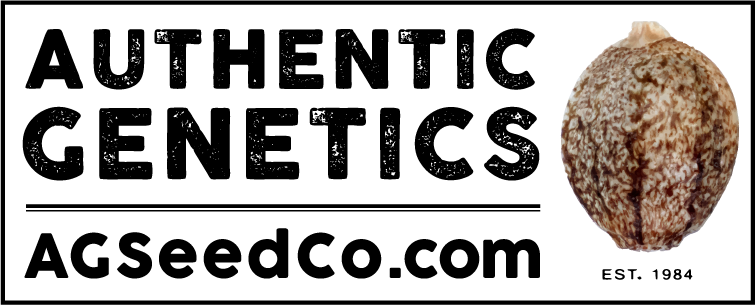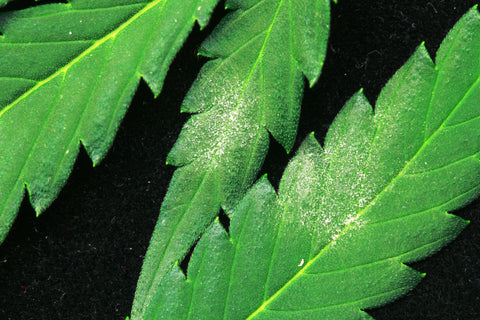How to cure Powdery Mildew
By: Todd McCormick
What is Powdery Mildew?
Unfortunately, powdery mildew really is a mystery to science and many growers, some believe PM a systemic pathogen that permeates via the plant’s vascular system, others believe is it superficial pest that spreads across the plant’s surface, either way, it is a common problem to many indoor and greenhouse growers. I have had my share of problems with it, I tried everything and sometimes, everything I tried only seemed to only get worse.
Fortunately, a couple years ago I started researching VPD, which stands for “Vapor Pressure Deficit” and I started to think that lack of humidity, could be a bigger problem than I thought.
Most of the time, growers rely upon transpiration and evaporation for their minimum humidity requirements, and while that may work in some parts of the country that are naturally more humid, in places like California, and high in the Colorado Rockies, I have come to realize that it really doesn't work at all.
Initially I tried small humidifiers that really did not make a difference to the room’s overall humidity. So I stepped up to a larger “Portacool” brand unit that I purchased at the local Home Depot, which is essentially a large swamp cooler that stands vertically and connects to a garden hose for constant water filling as it runs. Water is pumped over a membrane while a fan draws the humidified air through and instantly, my room felt like a rainforest, I went from humidity levels between 30% and 40%, up to 60% and 70%, and what a wonderful difference it made.

What I feel that happens is that, in a dry environment, the cuticle layer of wax/oil that accumulates on the leaf surface, dries up and causes the leaf to no longer work. Leafs have small pores that open and close in order to release oxygen and take in carbon dioxide, they are called stoma or stomata. And much like your own lips, stomata don't work as well when they are dried up. Once this cuticle layer of wax is dried off of the leaf, it is gone forever.
When a leaf is supple and pliable it is most healthy and has a thick coating of cuticle layer wax on its leaves, this wax serves as a protectant against everything from insects and UV, to powdery mildew and more. Science is only beginning to understand the important role that the cuticle layer of wax plays in a plant’s overall health.

In hash oil extraction, winterization is actually the process of separating the cannabinoid and terpene rich oil created by the trichome, with the not so tasty or psychoactive wax created by the leaf. If ever you have dabbed oil or shatter made from leaf material, you have tasted that waxy layer pulled off the leaf, and it was probably rather unpleasant.
While that leaf wax is nowhere near as nice as the oil created by the trichomes, it is no less important to the plant. Once the plant gets dry for too long, and that waxy cuticle layer is thin or totally gone, the leaf becomes nothing but a host for whatever pathogen happens to be floating by, photosynthesis stops, and the leaf becomes nothing more than a drain on the plant’s energy.
I would make the comparison to trying to grow a cannabis plant in too dry of an environment, as the same as trying to drive a car across a desert with just water and no antifreeze/coolant in the radiator, you may make it, but it's way more prone to overheat, and while you plant may make it through a dry environment, it's more than likely to have problems associated with lack of humidity.
Powdery mildew mostly attacks plants in dry environmental conditions, even if the plant is in a greenhouse or outside, depending on the environmental conditions leading up to the infestation of powdery mildew, I would now blame it on mother nature giving you add dryer condition than you expected and your plants suffering. I'll be the first person to admit that for a long time I really didn't take minimum humidity requirements into consideration, and I inadvertently dried the wax off of the leafs inadvertently.
If the leaf dries up and the stomata can not open and close the leaf is useless to the plant.

Since I have been operating my plants in a proper vapor pressure deficit range, which translates into around 60% to 80% humidity for mother plants, depending on the room temperature, I have completely eliminated powdery mildew from my three mother rooms, two flower rooms, and a greenhouse. I have over a 100 well known cultivars in my collection and none of them suffer from powdery mildew anymore. The environmental condition that felt good to me to work in, mid-70s at lower than 40% humidity, was negatively affecting my plants ability to transpire.
Adding to my problem, the MH and HPS lights that I was using before LED, created microclimates of heat just above my canopy that was a literally heating away the cuticle layer of wax on my leaf surfaces and exasperating the problem. Making it even worse, the air conditioners that I had to run to cool off my HID lamps further dried my environment and compromised my plants ability to transpire.
So what up really come to realize is that in order to grow a very healthy plant, you have to maintain that cuticle layer of wax on the leaf in order for the plan to be able to defend itself. using high alkaline foliar sprays further washes away the cuticle layer of wax on the leaf and makes many problems worse, and not at all better.
Now I recommend to my friends that they maintain their mother rooms at around 75˚ at 75% humidity, and their flower rooms slightly cooler at 72˚, and 70% humidity for the first 3 weeks, and once flowers start to develop, that they drop their humidity to about 60% and maintain the 72˚ temp.
But with cannabis, one size does not fit all cultivars, more Northern varieties of cannabis should have lower humidity levels further into flowering in order to avoid mold which can grow easily within dense flowers, on the other hand, tropical varieties of cannabis that originate near the equator, can maintain higher humidity levels without mold issues. So please be mindful that your mileage may vary depending on the cultivar you happen to be growing, and the environment you happen to be growing it in.
Follow me on instagram: @toddpmccormick



